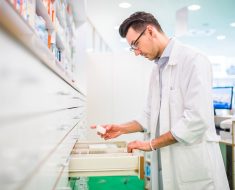
- Type 2 diabetes may soon be diagnosed through an analysis of one’s voice, according to a new study.
- Researchers developed a highly accurate model tool by analyzing six-to-ten-second voice clips from participants — some of whom had diabetes and some of whom did not — recorded on their smartphones.
- The study found that changes in pitch and voice strength were significant for diagnosing diabetes.
- The authors of the study hope that their research will eventually lead to a simple, in-home test for diabetes.
Currently, the most common and accurate methods for diagnosing type 2 diabetes involve blood work. A new study, however, asserts that type 2 diabetes can now be diagnosed based on the sound of a person’s voice.
Researchers from Klick Applied Science have developed a tool they say can diagnose type 2 diabetes in women and men, respectively, with up to 0.89 and 0.86 accuracy.
To achieve this, the researchers used an ensemble model that also factored in women’s body mass index (BMI) and men’s age and BMI.
The researchers recruited a total of 267 participants in India. There were 192 participants —79 women and 113 men —who did not have diabetes. Another 75—18 women and 57 men—had previously received a diagnosis of diabetes. With the aid of a smartphone application, participants recorded a single fixed phrase from six to 10 seconds up to six times each day for two weeks.
They analyzed the resulting 18,465 recordings, measuring 14 different acoustic characteristics. This allowed the authors of the study to construct their diabetes identification tool.
For women, the telltale characteristics turned out to be related to pitch, while for men, changes in strength or amplitude delivered a type 2 diabetes diagnosis.
The study is published in Mayo Clinic Proceedings: Digital Health.
Pitch in women, amplitude in men
“We looked at a number of vocal features, like changes in pitch and intensity that can’t be perceived by the human ear,” the study’s lead author Jaycee M. Kaufman, a research scientist at Klick, told Medical News Today. By leveraging techniques from AI and machine learning, the researchers were able to detect and measure such subtle changes in people with type 2 diabetes.
“We were surprised to find those vocal changes manifested in different ways for males and females,” said Kaufman.
Klick’s tool can spot diabetes in women by the pitch of their voice, the amount of deviation from that pitch, and by relative average fluctuations in pitch in a single captured recording.
For men, the authors describe an analysis of intensity, or amplitude, in the voice, as well as relative average perturbations in pitch for diagnosing type 2 diabetes.
How diabetes affects voice
Dr. Ari S. Eckman, endocrinologist at Holy Name Medical Center in Teaneck, NJ, who was not involved in the study, said there are several ways in which type 2 diabetes might affect one’s voice: “Patients with elevated blood sugars may have changes to their vocal cords, possibly due to the effect it has on [their] elastic properties.”
People with long-term untreated type 2 diabetes may also develop nerve-damaging peripheral neuropathy that can cause hoarseness and place a strain on their vocal cords, said Dr. Eckman.
“Additionally, patients may have myopathy, damage of the muscle fibers, which have been shown to [result in] an increased prevalence of voice disorders, potentially due to muscle weakness within the larynx,” he said.
How is type 2 diabetes currently diagnosed?
“Currently validated tools established to diagnose diabetes include lab work,” explained Dr. Jason Ng, endocrinologist at the University of Pittsburgh, who was also not involved in the study, listing “HbA1c [hemoglobin A1C], sugar levels in varying environments, or an older method of a oral glucose tolerance test.”
“To date, we don’t have any validated tools to confirm a diagnosis that doesn’t involve lab work, so this would be novel,” said Dr. Ng.
“There is a significant need for patient screening in the diabetes space, and that access to healthcare may be a limiting factor for some individuals to receive a diagnosis,” Kaufman noted.
An at-home test for type 2 diabetes?
Kaufman said they “envision a technology that would allow people to screen themselves for type 2 diabetes in their own homes.”
“If they receive a result indicating they may be at risk for Type 2 diabetes, they could then visit their primary care physician for a confirmatory diagnosis,” she said.
“I look forward to a future where diagnoses can be further simplified for patients, and anticipate the promising work performed in this study will further be pursued with that intention,” said Dr. Ng.
For Dr. Eckman, the tool may prove most valuable as a means of tracking the health and progress of a person with diabetes.
“I think that changes in the vocal cords of patients with diabetes may make it more useful to see how patients are doing overall with their diabetes,” he said, adding that he saw it as an additional tool for assessing patients’ control or lack of control of blood sugars.
“We are thrilled about the fact that this work is now possible. [Until] recently, this kind of analysis was out of reach due to its complexity. The rise of powerful machine learning and computational techniques now allows us to mine the voice for clues to people’s health.”
— Jaycee M. Kaufman, lead author
Kaufman described this as a very exciting time for digital medicine.
“We hope that with earlier detection and intervention we can help to reduce the complications of undiagnosed type 2 diabetes while also having a profound impact on the accessibility challenges associated with screening,” she added.
Source: Read Full Article





